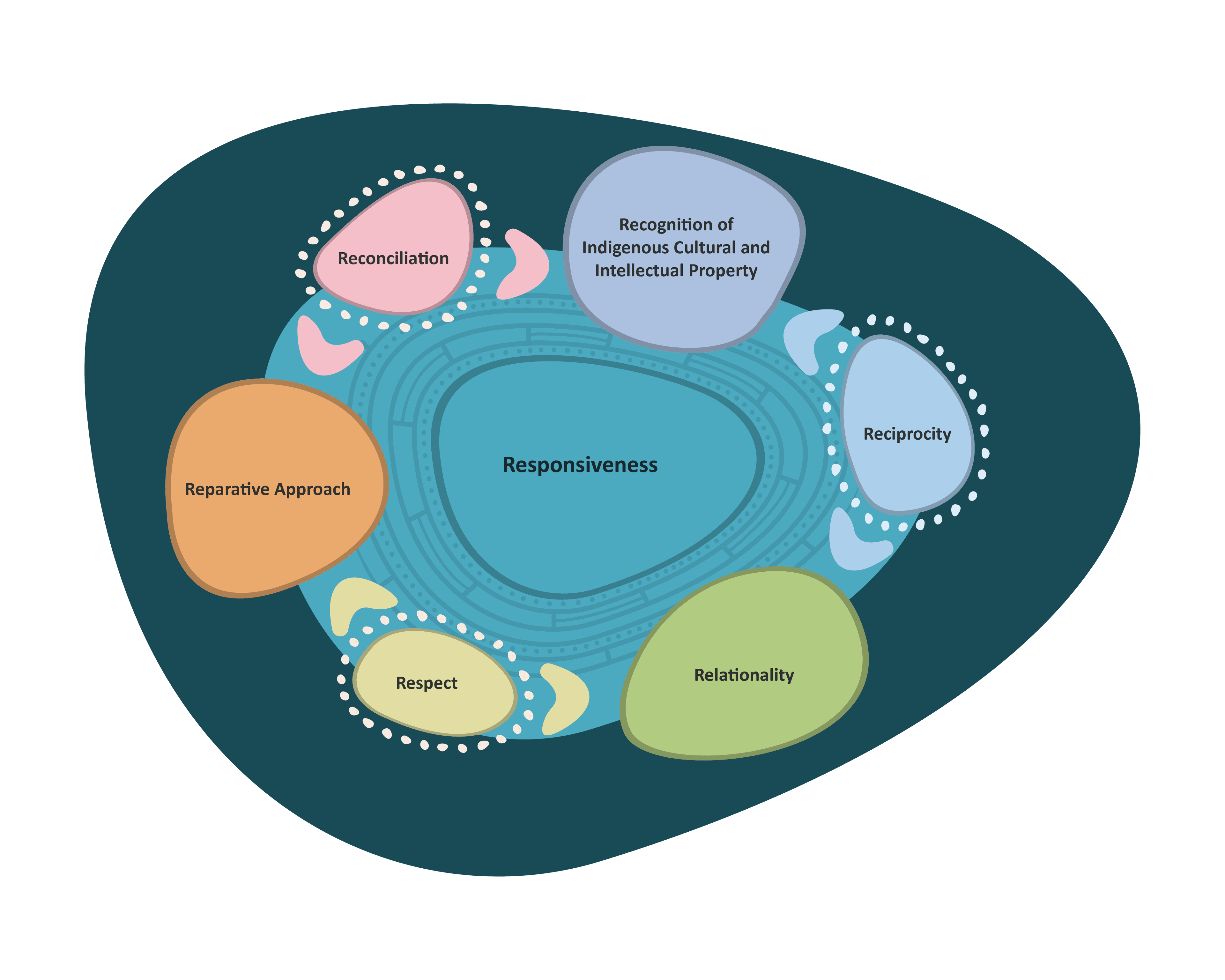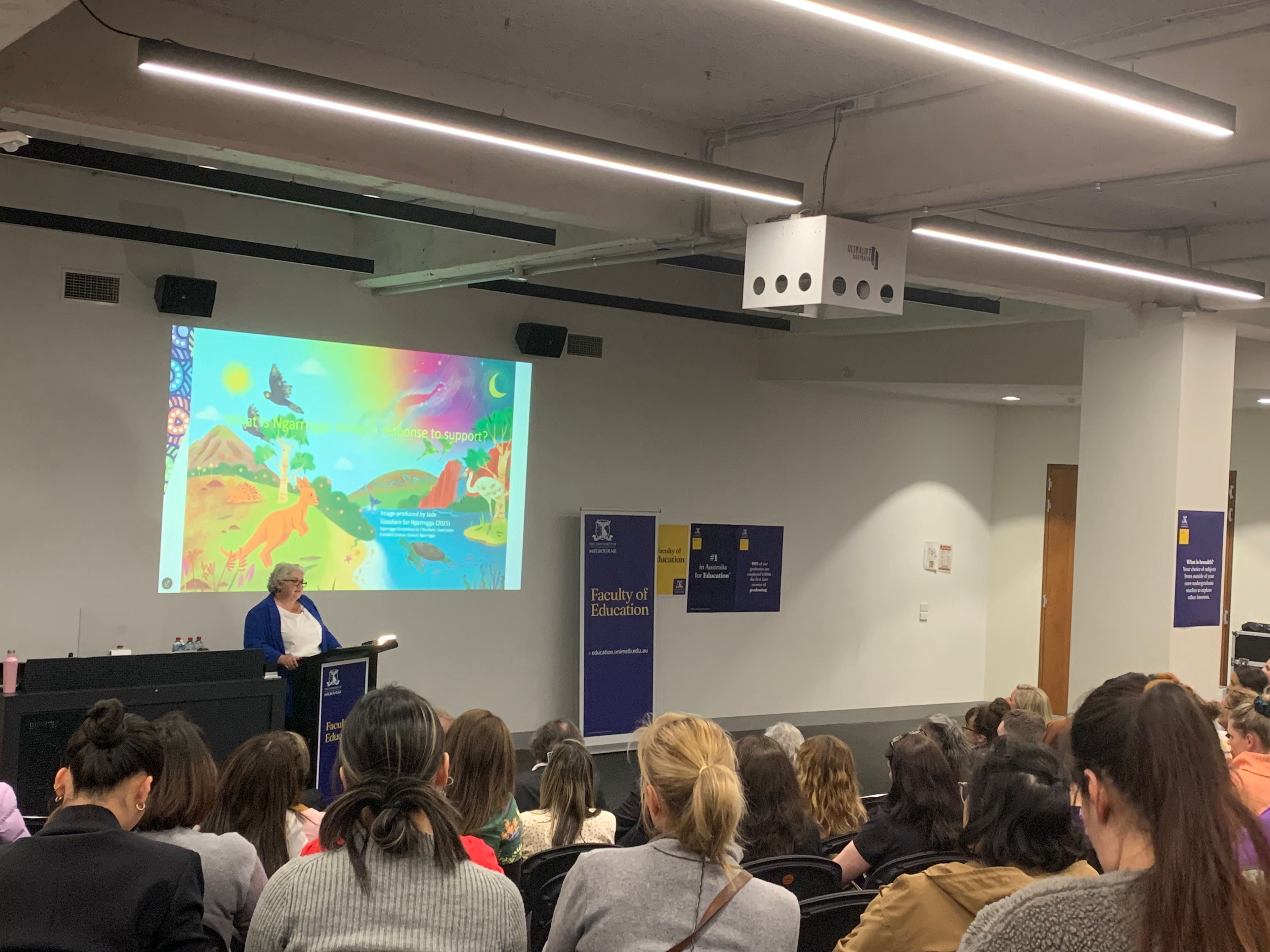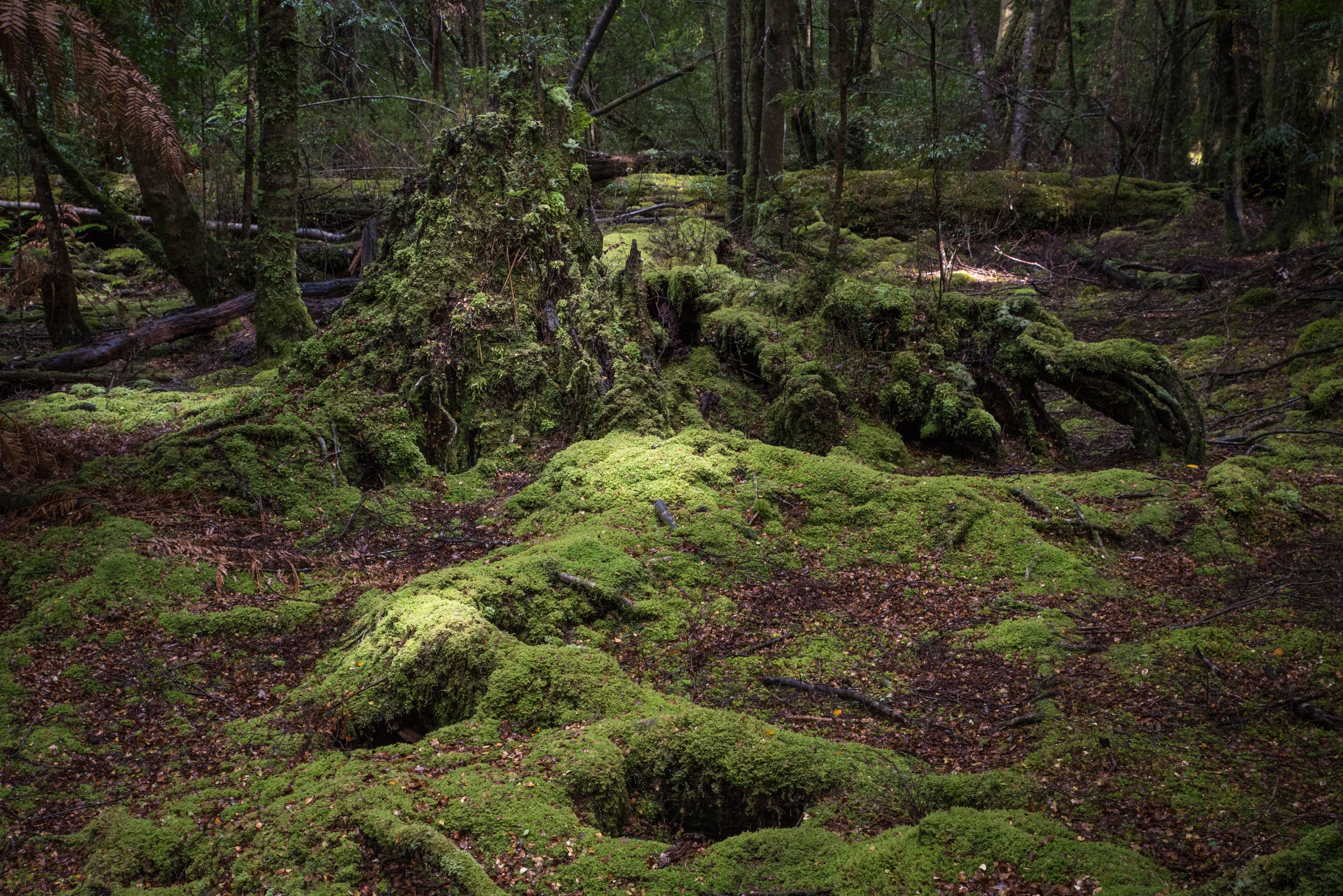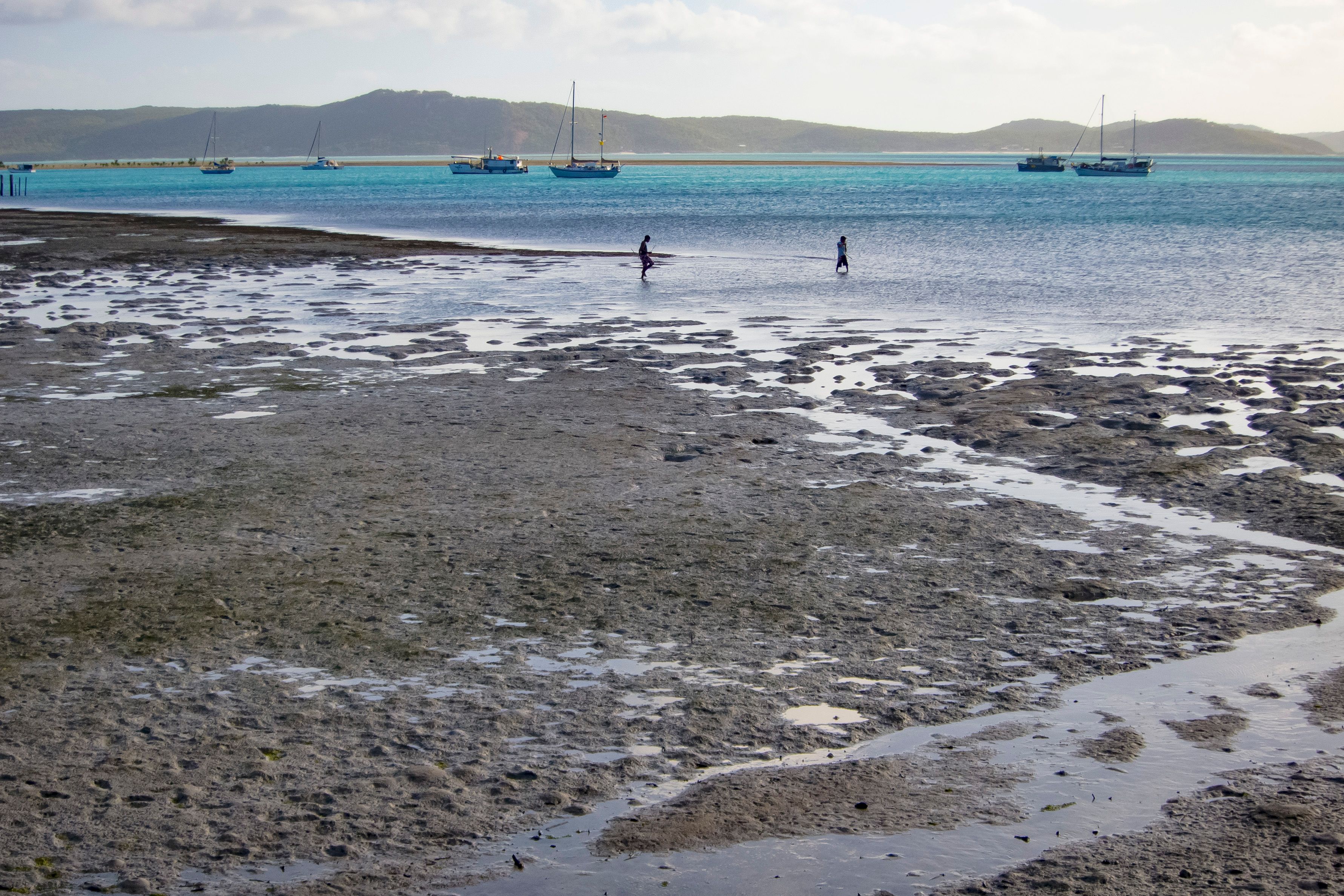Home/Stories and news/Bridging Pedagogies and Possibilities - Bringing a culturally responsive lens to our pedagogical preferences

Bridging Pedagogies and Possibilities - Bringing a culturally responsive lens to our pedagogical preferences
Magpie Perching on Barbed Wire Fence. New South Wales. Photographer: Tetra Images. Source: Getty Images. Used under Licence.
In this blog piece, we highlight how applying a culturally responsive lens to pedagogical preferences brought to museum education can help educators identify, integrate, and contextualise subject, context and concept-specific frameworks.
By examining the affordances and tensions inherent to inquiry-based, object-based, disciplinary, public, and decolonising pedagogies through a culturally responsive lens, we identify key questions and considerations educators can bring to their pedagogical preferences to foster alignment with principles of respect, reciprocity, and relationality.
Collectively, we explain how bringing a culturally responsive lens to examples of pedagogical approaches educators use in museum settings can help educators identify how and where these work to support and deepen students' cross-cultural understandings.
In explaining, we point to a range of further reading referenced that educators can look to for further information and guidance.
Embracing Culturally Responsive Pedagogies
The education resources for 65,000 Years: A Short History of Australian Art are designed to encourage educators to revisit and reflect upon their pedagogical practices and explore new approaches, this being central to Ngarrngga's invitation to ‘be brave and have a go’ (Ngarrngga, 2024)
When teaching and learning in museum and gallery settings, educators can leverage their expertise and agency to create powerful experiences that respect cultural narratives, promote critical dialogue, and enable multidimensional examination of complex topics.
Below, we examine some of the affordances and tensions that a culturally responsive lens reveals for pedagogical approaches commonly used in museum settings.
We explore how educators might bring these to consider how and where their own pedagogical preferences can work to respectfully engage with Indigenous knowledge expressed through material culture and artistic works.
Inquiry-based Pedagogies
The truth-telling imperatives of 65,000 Years: A Short History of Australian Art actively engage with the experiential voice, perspectives and experiences of Indigenous Peoples in Australia.
The works of art and cultural objects brought together by the exhibition challenge dominant colonial narratives, bringing to light contestations that ought to be known, heard, and understood regarding Australia's shared histories.
In this context, teaching with and about contested narratives requires pedagogical approaches that support students to identify, engage with and critique power imbalances (Bekerman & Zembylas, 2014) between Indigenous and non-Indigenous lived experiences expressed through art and curatorial practice (Cameron, 2024).
The exhibition’s education resources include a range of inquiry prompts and curious questions that educators can use to co-design and co-pursue inquiries that meaningfully engage with Indigenous knowledge, perspectives and voices.
By exploring narratives and supporting conversations surrounding human/environment relationships, artists, curators and cultural institutions provoke inquiry into societal priorities (MacDonald et al., 2024).
Educators are encouraged to adapt, contextualise and pursue inquiries with their students that spark curiosity, critical discernment, thinking and dialogue in museum contexts that meaningfully engage with Indigenous knowledge and perspectives.
Object-based Pedagogies
The experience of learning with cultural objects can involve a socially constructed and connected praxis imbued with historical and spiritual significance for human and non-human made objects that bear imprints of memories and journeys (Cameron, 2024).
With over 400 works featured, the exhibition lends itself well to object-based pedagogies that encourage close observation, listening, and dialogue with works of art and cultural materials (Rigney & Kelly, 2023).
Objects can arouse students' curiosity, evoke memories and associations, and motivate them to ask questions and seek answers, thereby deepening their learning processes (Barton & Willcocks, 2017).
With this in mind, educators should also be mindful that object-based learning can carry an inanimate connotation that risks misrepresenting the significance of cultural materials associated with living entities within their communities of origin (Schultz, 2018).
With these considerations in mind, educators can position cultural collections as active agents that attune students to the perspectives being communicated, and facilitate conversations where students engage with rather than speak for the communities represented (Chatterjee & Hannan, 2015) in and through material culture or works of art.
When used thoughtfully with due awareness of these considerations, object-based pedagogies can be successfully applied in onsite and online museum, gallery and classroom education settings.
Integrating Cross and Transdisciplinary Pedagogical Approaches
The exhibition presents a convergence of Indigenous knowledge across multiple art forms, creating opportunities to work with pedagogies that bring together, activate and reach beyond disciplinary ways of knowing (MacDonald et al., 2019; MacDonald et al., 2024).
However, educators must critically examine how disciplinary knowledge is constructed, framed, and positioned in these pedagogical frameworks, as the conception of disciplinary ways of knowing and doing within these have often been shaped about, rather than with and by, Aboriginal and Torres Strait Islander peoples (Mackinlay & Barney, 2014; Nakata, 2006).
By interpreting and enacting these pedagogies through a culturally responsive lens (Ngarrngga, 2025), educators can create and engage a ‘between space’ (Nakata, 2007; Phillips et al., 2007) to discern and unsettle how Western notions of disciplinary power and authority might play out in the deployment of curriculum integrated pedagogical strategies (Maher, 2022).
These considerations and actions can help educators ameliorate the potential for disciplinary ways of knowing and doing to dominate or suppress Indigenous voices, perspectives, and stories central to the learning experiences that can be facilitated in museum contexts.
Public Pedagogies
Public pedagogies can refer to the diverse ways in which culture functions as an educative force, shaping our understanding of the world (Giroux, 2006).
The exhibition's education resources strive to harness this potential, positioning museums and galleries as spaces for public learning.
When considered through the mediating lens of cultural responsiveness, museum displays and exhibitions can offer contexts to engage with cultural objects and works of art.
When combined with the affordances of public pedagogies, educators can create learning experiences that invite students to identify and challenge assumptions in culturally responsive ways.
These experiences can foster students’ critical thinking and promote understandings of how the socio-cultural and political dimensions of art and curatorial practice can highlight and shape actions for social transformation (Clover et al., 2021).
Culturally responsive public pedagogies can be leveraged to identify and challenge dominant narratives and promote awareness of the multifaceted contexts and lived experiences represented.
Educators can examine the affordances of their preferred pedagogical approaches to create culturally responsive public-facing learning experiences that support students to engage with Indigenous artistic expressions.
Decolonising Pedagogies
Museum settings require educators to critically reckon with the colonial histories and legacies that have shaped these institutions (O’Sullivan, 2023).
They must remain attentive to and vigilant against superficial engagements with decolonising discourses that fail to genuinely centre Indigenous peoples and the contributions of Indigenous artists, intellectuals, and activists (Mackinlay & Barney, 2014; Tuck & Yang, 2012).
Decolonising is challenging pedagogical work that cannot be easily grafted onto existing frameworks, even those deemed critical, anti-racist, or justice-oriented (Tuck & Yang, 2012).
To meet this challenge, educators must recognise the inherent tension and ongoing nature of decolonising work, requiring sustained attention, reflection, and reflexivity.
The education resources for 65,000 Years: A Short History of Australian Art foreground opportunities for educators to engage in and with the vital work for acknowledging the colonial histories that have shaped museum practices.
This work can be pursued alongside efforts to support students’ coming to know, hear and understand through their engagement with Indigenous voices, perspectives and narratives made available within artistic practice and expressions.
Ultimately, decolonising pedagogies demands a sustained commitment to ensure approaches taken actively prioritise Indigenous voice, perspectives and knowledge.
It involves ongoing engagement in processes of unlearning, relearning, and co-creating meaning in partnership with Indigenous communities (McLeod, et al., 2020; MacDonald & Beasy, 2024; Whitcomb, 2015)
Acknowledging and working with pedagogical tensions
In bringing a culturally responsive lens to our preferred pedagogical approaches, we can build awareness of their affordances and tensions and keep across how these permeate our intentions and efforts to engage learners in museum settings.
The suite of education resources developed for 65,000 Years: A Short History of Australian Art provide information and guidance educators can use to reflect upon how their pedagogical approaches uphold cultural awareness, safety, and responsiveness for teaching and learning with the exhibition.
Key questions to consider include (but are not limited to):
What pedagogical questions will encourage generative and respectful conversations with and about Indigenous Knowledge?
What pedagogical strategies will help you foster active listening, reflection and arrival at shared understandings with students?
What does relationality, reciprocity and respect for ICIP look like and sound like through the lens of your preferred pedagogical approaches?
How and where can I leverage my pedagogical strengths to help students and myself identify and challenge assumptions?
Pedagogical approaches that enable the elevation of Indigenous voices, perspectives, and stories, acknowledge museums' colonial histories and their effects, and support efforts to collaborate with Indigenous people are essential for truth-telling in education.
This work requires pedagogical courage, humility, and effort, and a preparedness to learn from mistakes, make amends and change where needed, and to persevere.
References
Barton, G., & Willcocks, J. (2017). Object-based self-enquiry: A multi-and trans-disciplinary pedagogy for transformational learning. Spark: UAL Creative Teaching and Learning Journal, 2(3), 229-245.
Bekerman, Z., & Zembylas, M. (2011). Teaching contested narratives: Identity, memory and reconciliation in peace education and beyond. Cambridge University Press.
Cameron, L. (2024). ‘Reclaiming their stories’: A study of the spiritual content of historical cultural objects through an Indigenous creative inquiry. Australian Archaeology, 90(2), 140-151.
Chatterjee, H. J., & L. Hannan. (2015). Engaging the Senses: Object-Based Learning in Higher Education. Ashgate Publishing Limited.
Clover, D. E. (2024). Feminist storytelling in the museum: Uncovering pedagogies of critique, possibility, and agency. Dialogues in Social Justice: An Adult Education Journal, 9(1).
Giroux, H. A. (2004). Cultural studies, public pedagogy, and the responsibility of intellectuals. Communication and critical/cultural studies, 1(1), 59-79.
Mackinlay, E., & Barney, K. (2014). Unknown and unknowing possibilities: Transformative learning, social justice, and decolonising pedagogy in Indigenous Australian studies. Journal of Transformative Education, 12(1), 54-73.
Maher, K. (2022). The Aboriginal and Torres Strait Islander histories and cultures cross curriculum priority: Pedagogical questions of Country, colonialism and whose knowledge counts. The Social Educator, 40(2), 3-17.
McLeod, K., Thakchoe, S., Hunter, M. A., Vincent, K., Baltra-Ulloa, A. J., & MacDonald, A. (2020). Principles for a pedagogy of unlearning. Reflective Practice, 21(2), 183-197.
MacDonald, A., & Beasy, K. (2024). A water [shed] moment for articulating a professional practice of education resource creation. Australian Journal of Environmental Education, 40(2), 305-321.
Nakata, M. (2006). Australian Indigenous studies: A question of discipline. The Australian Journal of Anthropology, 17(3), 265-275.
Nakata, M. N. (2007). Disciplining the savages, savaging the disciplines. Aboriginal Studies Press.
Ngarrngga. (2024). Welcome to Ngarrngga, https://www.ngarrngga.org/
O'Sullivan, S. (2023). The museum of the imagination: Curating against the colonial insistence on diminishing Indigeneity. In The Routledge handbook of Australian Indigenous peoples and futures (pp. 336-345). Routledge.
Rigney, L. I., & Kelly, S. (2023). Reterritorialising pedagogies of listening: bringing into dialogue culturally responsive pedagogies with Reggio Emilia principles. Discourse: Studies in the cultural politics of education, 44(1), 147-161.
Schultz, L. (2018). Object-based learning, or learning from objects in the anthropology museum. Review of Education, Pedagogy, and Cultural Studies, 40(4), 282-304.
Witcomb, A., Message, K., & Witcomb, A. (2015). Toward a pedagogy of feeling. Oxford: Wiley.
Read part 1 of this blog article: https://www.ngarrngga.org/stories-news/culturally-responsive-pedagogies-for-museum







